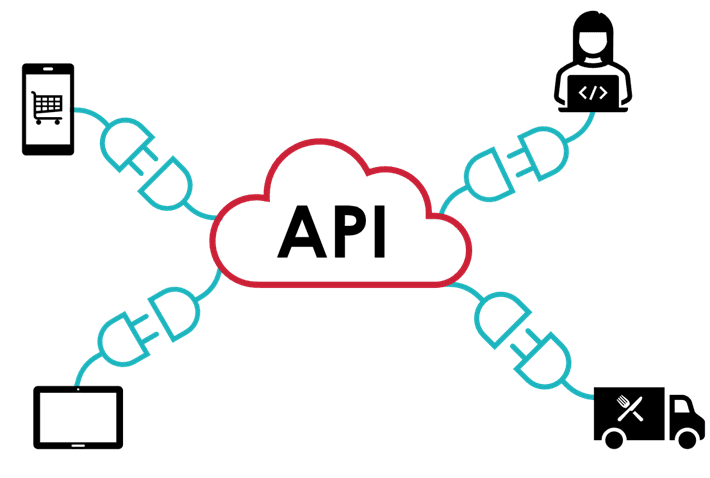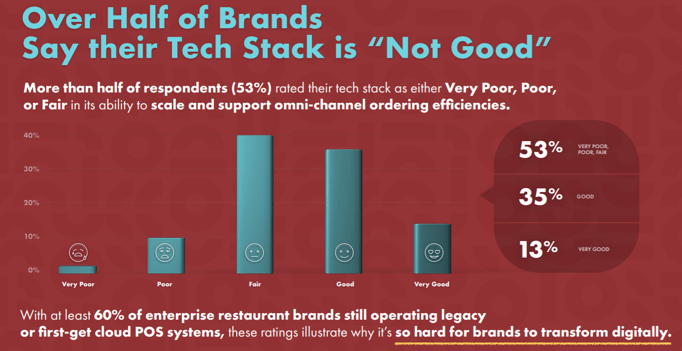- The Rise of APIs & difference between SOAP and REST
- Adopting an API-First Approach
- How they’ll become even more important in the future
The Significance & Rise of APIs
If you’re not familiar with APIs, let’s start with a simple definition: they’re essentially a software-to-software interface that lets two different applications exchange data and communicate with each other, much like subway trains connecting two different routes. Though they’ve been around since the beginning of computing, the web-based APIs that we commonly use today came to be in the late 90s and early 2000s.

- Decentralized, network-reliant computing models
- The development of “as-a-service” as a ubiquitous software delivery model
- Increased variety and diversity of applications for different business functions and needs
Adopt an API-Forward Approach (Fast!)
Restaurants are increasingly reliant upon technology to ensure relevance. But as recent market forces have illustrated, not all tech stacks are up to the challenge of keeping pace with fast-evolving guest demands and the need for digital transformation. Too often, legacy point-of-sale systems act as barriers to growth and agility, rather than enabling responsiveness and the ability to quickly enact change.

- Guest engagement: Ease of integration and open APIs can transform your technology stack from a simple facilitator of orders and transactions into a platform that drives revenue, loyalty, and actionable guest insights.
- Operations: In addition to tighter alignment between front and back of house, an API-led architecture helps optimize many operational elements of your business, from accounting, labor management and inventory to (perhaps most importantly) clean, normalized data transfer between departments and applications.
- IT: With an API-first approach, IT teams can shift focus from simply managing technology and POS infrastructure to quickly implementing new technologies and optimizing performance of ordering and production applications. While delivering on your core promise – great food and guest experiences.
Invest in Your Future with APIs
When it comes to what’s next, APIs can help brands keep an eye firmly fixed on the future. Other than accelerating the shift to digital, the pandemic has made it starkly clear that the ability to react quickly to change isn’t just a differentiator, but necessary for restaurants to succeed.

- Incorporate new ordering channels in support of rising preferences for takeout and delivery, like voice and virtual assistants (not to mention delivery and third-party marketplaces)
- Better understand current customers and attract new ones, through the normalization and deployment of data
- Rapidly deploy new operating models and revenue streams, like cloud kitchens and virtual brands
- Streamline bloated technology stacks to reduce complexity and drive greater efficiencies within and across organizations
- Enhance operations through unique architectures that support stability and high levels of redundancy
Qu recognized the importance of an API-led architecture and has since developed a truly unique, differentiated restaurant technology platform that extends tangible benefits across the entirety of a brand’s operations, from the preparation and delivery of food to the overall management of an enterprise technology stack at the executive level. This approach allows restaurants to succeed in an industry that is increasingly reliant on the connections that APIs facilitate, no matter what function they support.

